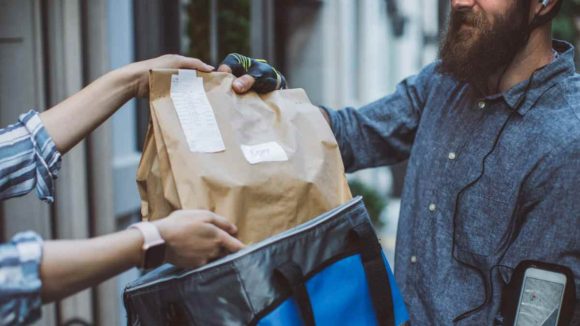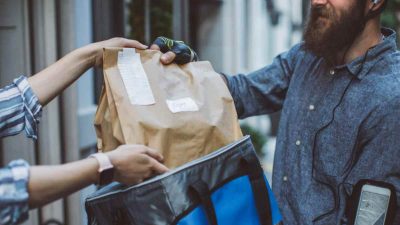Restaurants have many options when it comes to choosing the best delivery app. Uber is one of the most successful and popular apps on the market. However, making the right choice for your brand can help you find more potential customers faster.
Guiding you through this process, you’ll learn how delivery platforms charge restaurants, how the algorithms work, and what challenges the industry faces.
Qualities Of The Best Delivery App?
Businesses are focused on what customers think of them, which attracts more money. So, choosing the right delivery platform or app that aligns with your brand values is crucial.
Brand alignment is important. Many customers stay loyal to restaurants or brands because they reflect their own values. If the restaurant promotes a busy billionaire lifestyle, you want to make sure the deliveries are on time, professional, and fit their sophisticated lifestyles.
If a restaurant believes in sustainability, partner with a platform that prioritizes it.
Using the best app for your business will help you reach the right crowd of customers. The app you select directly affects your customer base.
What’s in Your Delivery Platform Fee?
There are five key revenue streams for delivery platforms, according to a McKinsey and Company study.
- Restaurant commission fees
- Customer delivery fees
- Customer-service fees
- In-app advertising
- Tips
Let’s look at how delivery apps are making money and what you are actually paying for.

Why Do Restaurants Pay Commission Fees to Delivery Platforms?
Most delivery platforms charge restaurants up to 30% of the price of a meal. The amount can vary depending on the following.
- Restaurant’s size
- Order volume
- Additional services (marketing or promotional placements on the app)
Remember, rates are negotiable on some delivery platforms. A restaurant might pay a lower commission if it excludes certain promotional services. However, having better visibility on the app might also require more money.
Why Customer Are Paying For Delivery Fees
You get fixed charges and dynamic pricing.
Fixed charges are when delivery fees are added to the customer’s bill for the driver’s service. It can range from $2 to $5 per order. Factors influencing this are the distance, delivery speed, and the time of the day.
Dynamic pricing occurs when delivery fees increase during peak hours or in certain areas with high demand for deliveries. This would usually be in densely populated areas or near office parks. This is the same pricing model used by ride-sharing apps like Uber.
Just remember that high delivery fees can deter customers from placing orders. This could specifically impact smaller orders when the service is not worth the price.
What Customer-Service Fees Are Used For
Beyond the delivery fee, platforms often add a service fee, adding another 15% of the total order.
This fee covers the cost of using and maintaining the platform.
The downside is that there are also hidden costs, which they only realize until they reach the checkout page. This can lead to customer frustration. Many delivery platforms argue that this service fee is necessary to maintain the platform and ensure smooth operations, but it can affect customer satisfaction.

What Is In-App Advertising On A Delivery App
Restaurants can pay to be noticed more prominently on the delivery apps through in-app advertising.
This can include the following:
- Promoted listings that appear at the top of the search results.
- A banner advert over the site.
- Targeted promotions based on user behavior.
In-app advertising can generate significant revenue. It allows companies to monetize their user base without relying solely on transaction fees. This is especially beneficial for restaurants in a crowded market.
How Delivery Drivers Earch Extra With Tips
Tips go directly to the delivery driver’s pocket. Most of the time, it’s based on the order size; however, with smaller orders, customers might stick to a fixed amount.
This helps the company to feel less pressured to pay higher wages to delivery drivers.
Some delivery platforms have been criticized for not indicating how the tips are allocated and whether they go to the driver.

Five Questions to Ask Before Choosing a Delivery App
Commission fees, integration, customer support, and customer complaints are essential when choosing the right delivery platform for your business.
Is Commission Fee To Delivery App Negotiable?
Make sure the commission fees are negotiable. Ask if there’s room for negotiation. This is especially important if you bring in a high order volume. The chases are high, and customers would be willing to participate in promotional activities on the app.
Does the Delivery App Integrate With Existing POS Systems?
Choosing an app that does not seamlessly integrate with your existing Point of Sale (POS) system can cost you more money and frustration.
But if the integration is smooth and easy, it can save you time, reduce errors, and provide post-delivery analysis. Without this integration, you might have to manually enter orders, which can take a lot of your time. And mistakes can quickly happen.
This happened with My Foodie Box before it found Locate2u’s software. Delivering fresh food to customers is tricky. However, the right delivery app can save a company’s work hours by allowing for massive scaling.
What Customer Support Does The Delivery App Provide To Sellers?
With the right delivery app, there is sufficient communication between driver and customer. From knowing when the delivery will arrive to communicating live with the customer.
When customers feel more in control, their delivery experience improves. If something goes wrong from a technical side or an unhappy customer, you need to ensure the delivery app provider will assist you 24/7.
It’s also important to ask whether multiple support channels, such as email, phone, or live chat, can reach the support team and to ask about the general response time.
To Use Popular Delivery Apps or Not
Using large platforms like Uber Eats, DoorDash, and Grubhub has specific benefits and disadvantages. It’s important to consider all the pros and cons on the table.
These platforms give your business access to millions of active users, offering a broad audience to restaurants and companies that offer food deliveries.
It can instantly increase your visibility and attract new customers. The biggest drawback is the commission fees. It can take up to 30% per order. This can have a significant impact on profit margins.
These platforms come with an established reputation, which can benefit your restaurant. If customers trust the app, they trust the restaurant easier.
However, the competition on these apps is enormous. Standing out can be challenging, especially if you don’t have the funding to invest in promotions or paid visibility.
There can also be potential hidden costs like marketing fees or service fees. Make sure you ask upfront about all the extra costs that could eat into your revenue.

How To Be More Visible On Delivery Platforms
Understanding how to be visible to more customers can help sellers to be more continuous with minor changes to get more customers’ attention.
Food delivery app algorithms analyze various factors by prioritizing personalization. It considers a user’s location, preferences, and past orders.
According to Deliverect, algorithms also factor into restaurant popularity. This means restaurants often ordered from with a high rating are more visible.
The distance between the restaurant and the customer is extremely important. Closer locations are given priority to reduce the delivery time. Real-time data adjusts rankings based on order volume and wait times.
Deliverect explains that machine learning continuously improves recommendations.
Challenges Faced by Delivery Apps
Several key influences affect different market players as the food delivery business grows.
Geographic competition
Delivery platforms fiercely compete in specific regions, focusing on customers, restaurants, and drivers.
In some areas, there might be no rush hour or peak times during lunch hour due to older families residing in certain regions. On the other hand, there might be spots where high-rise office parks tower over suburban houses.
This intense competition might lead to consolidation, where smaller players merge with larger ones. As platforms expand, they vent into new business initiatives beyond just restaurants.
Customers can order mattresses and bedding accessories in the US through Mattress Firm and have it delivered by DoorDash in two hours.
Specialized Delivery Platforms
Apps focusing on niche markets, like pizza or Chinese cuisines, are successfully entering the market. These specialized services cater to specific customers and are gaining traction.
There could be a connection through:
- Cultural food
- Dietary-specific food (vegetarian)
- Lifestyle-specific food (clean eating, zero carbs)
The Zomato delivery app in India is an excellent example of a food delivery company that understands its niche and stays true to its culture.
On the flip side, restaurants with a broad market battle to stand out from the crowd regarding online delivery.
5 Things To Remember When Choosing A Delivery Platform
Assess your restaurant or food delivery business’ needs to fit your specific customers’ requirements for an excellent experience.
Remember, you can negotiate for better rates; don’t settle for the first offer from a delivery platform.
Make sure that the delivery software integrates seamlessly with your existing systems.
Consider the customer experience, especially when it comes to transparent pricing.
And lastly, make sure you stay ahead with the latest technology offerings for the file mile to your customers’ door.
NOW READ: Exclusive: Glovo GMadviseso small businesses
About the author
Mia is a multi-award-winning journalist. She has more than 14 years of experience in mainstream media. She's covered many historic moments that happened in Africa and internationally. She has a strong focus on human interest stories, to bring her readers and viewers closer to the topics at hand.











